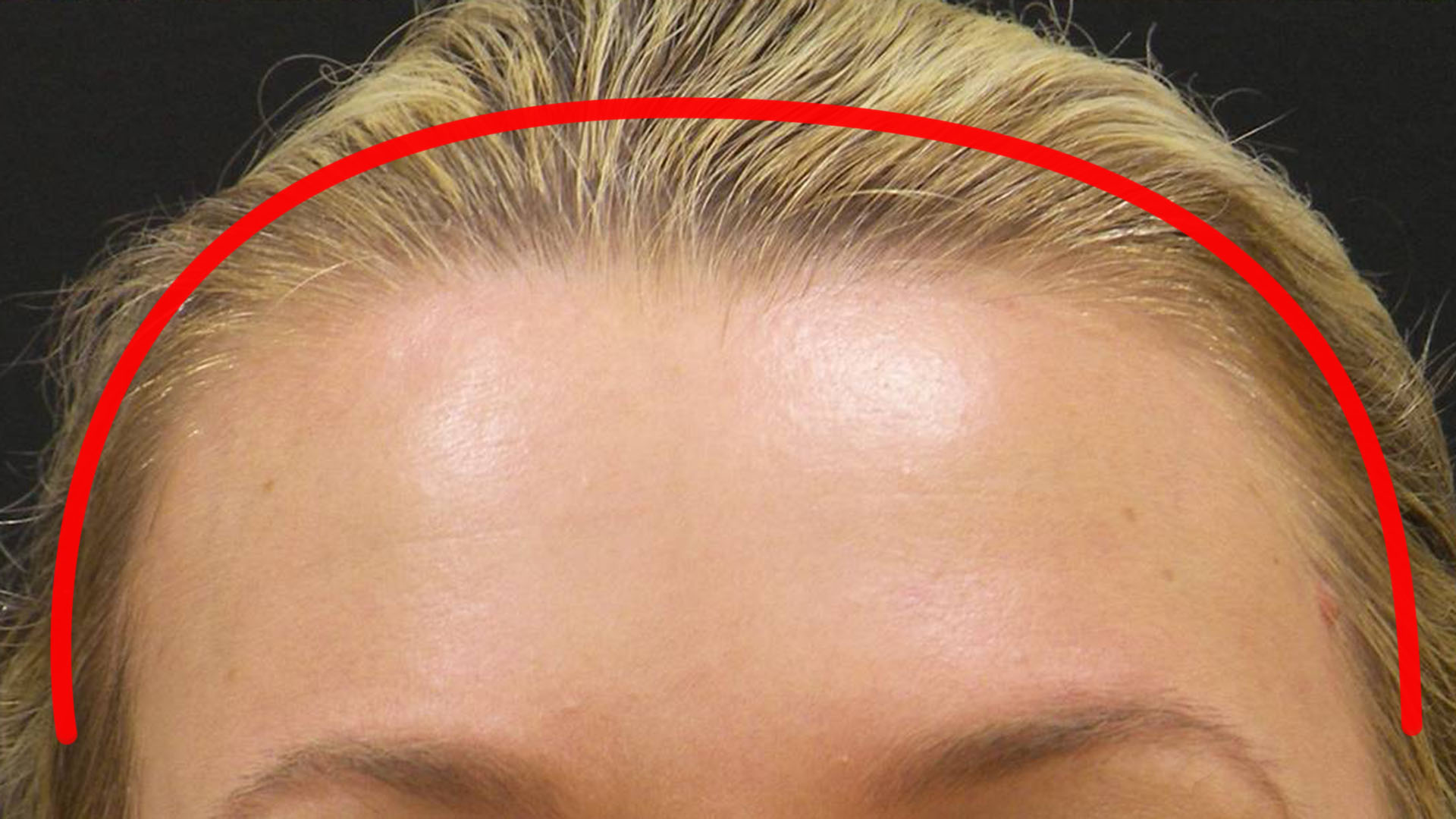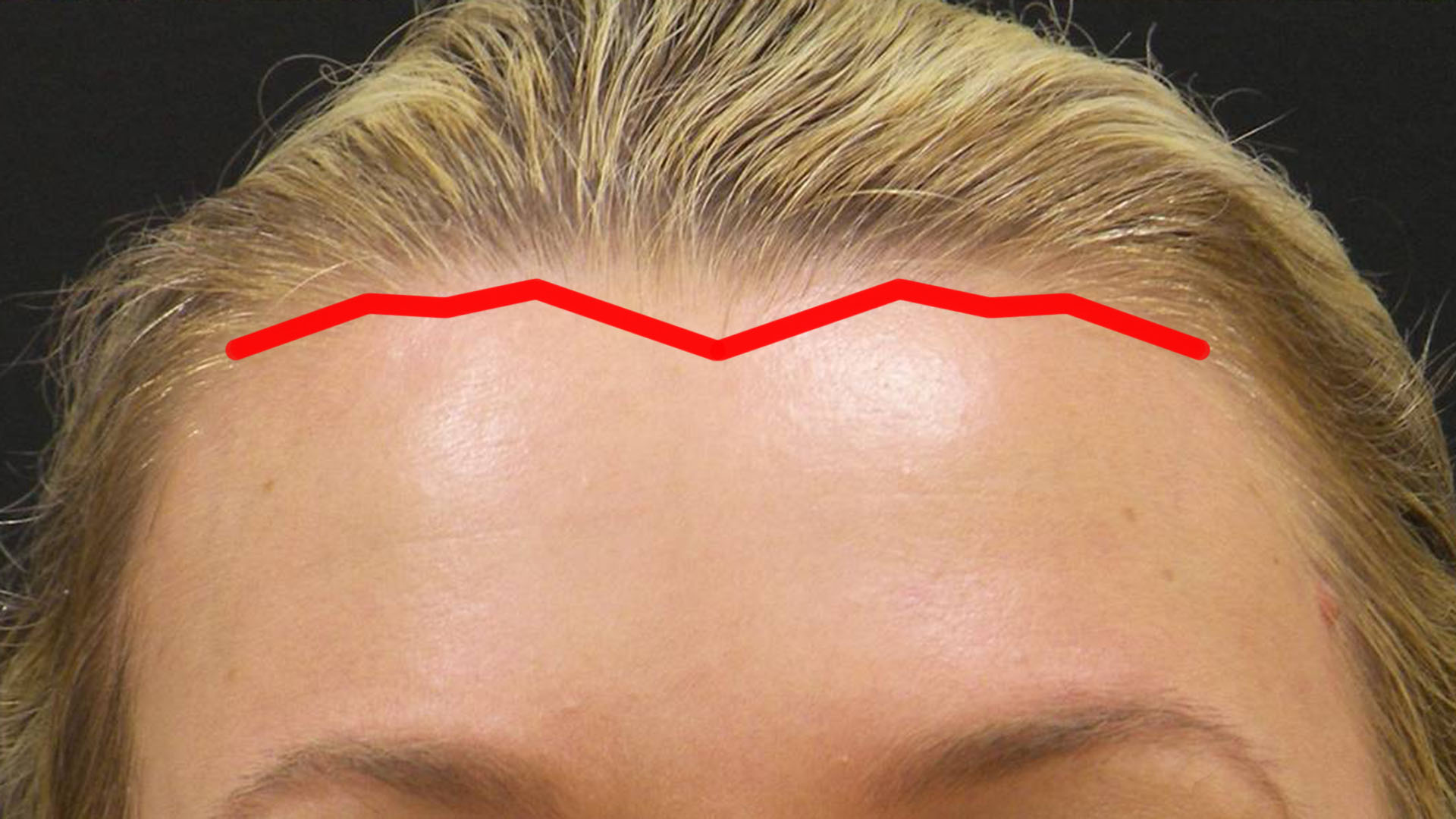Brow lift surgery is often necessary in patients with droopy eyelids. When the forehead and eyebrows descend, due to gravity and changes in skin, they push the eyelid skin down over the eyes, blocking vision. With many patients I find that lifting the brows is the most important part of opening the eyelids back up. This is especially true in patients with a prominent brow bone and eyebrows that were low to begin with. There are many options for brow lift surgery, all of which have pros and cons associated. Here I will go through the most common techniques and explain what I do and don’t like about each.
Coronal brow lift

Coronal brow lift incision site
Coronal brow lift surgery is the “gold standard” for brow lifting, meaning it is often held and the most effective and long lasting surgery, to which all other techniques are compared. It involves making an large incision over the top of the head, from just above the ears on each side, meeting at the crown of the head (hence the name). With this technique, the entire scalp can be mobilized and moved, pulling the forehead and brows up and back. A large ellipse of scalp tissue is removed. The head is wrapped for several days and a surgical drain may need to be placed based on the amount of bleeding. Sutures are removed in 7-10 days. Coronal brow lift surgery is performed under general anesthesia. This technique works well for someone with a normal to small forehead. It will pull the hairline back and make the forehead appear slightly larger. Pros: It is long lasting and very effective in pulling up the brows and smoothing the forehead; the incision can hide well in people with thick hair if created and closed properly. Cons: It requires a large incision with some shaving of the hair; it leaves a large scar, which can be noticeable if the adjacent hair doesn’t grow back or falls out; it moves the hairline back, making the forehead look bigger. My conclusion: coronal brow lift works well in a very select population, but is a much bigger surgery than most people need or want.
Pre-trichial brow lift

Pretrichial brow lift incision
Pre-trichial brow lift surgery involves making an incision right along the hairline. The forehead and brows are then freed up and pulled upward. The extra skin is marked and removed and the incision is closed. The head is wrapped for 2-3 days. Sutures are removed in 7-10 days. The brow lift surgery is also normally done under general anesthesia. Pre-trichial brow lift will shorten the forehead, which is good for patients with a normal or larger forehead who want to pull the hairline down, or don’t want it to move at all. It is best suited to people who wear their hair forward, covering the hairline. The incision will be more visible, but fades over the first year and is faint by a year from surgery. It can be completely hidden with the right hairstyle. Pros: Slightly less invasive than a coronal brow lift; it doesn’t move the hairline back and can be made to move it slightly forward; the dissection field is smaller and a drain is almost never used; it is long lasting. Cons: the visible scar must be hidden with the proper hairstyle; it is not suited to people with thin hair or a receding hairline. My conclusion: Although there are drawbacks, in the right patient, pre-trichial brow lift surgery gives excellent cosmetic outcomes and is a powerful, long-lasting way of lifting the eyebrows and smoothing the forehead.
In part 2 I will cover endoscopic brow lift surgery, direct brow lift surgery and the internal browpexy, which is becoming one of the most popular procedures combined with eyelid surgery to enhance the position of the brows without adding another incision.
